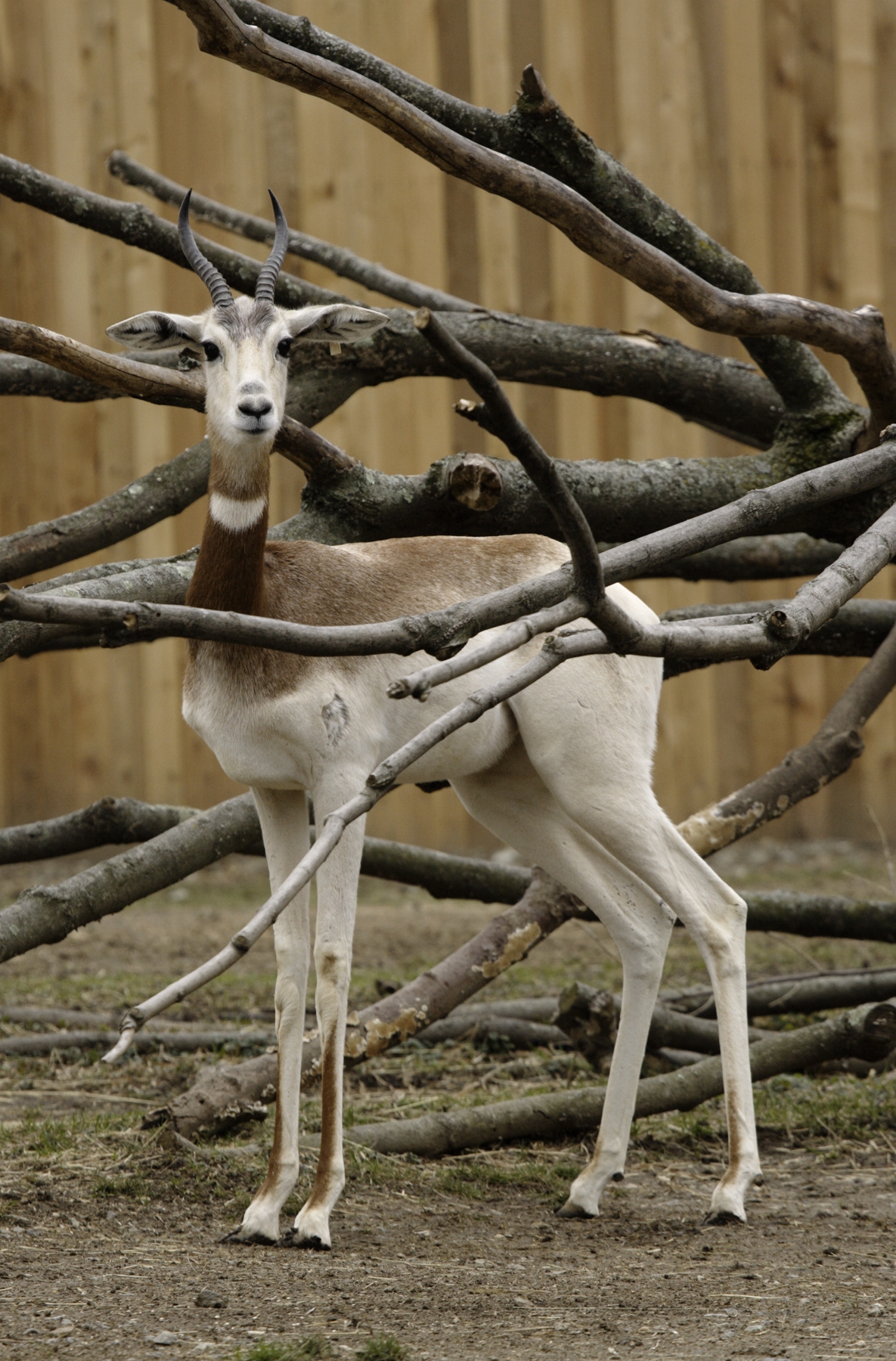Equine medical center veterinarian performs surgery on Smithsonian National Zoo's dama gazelle

Because dama gazelles are a critically endangered species, it was good news last fall that Sayda, a dama gazelle at the National Zoo in Washington D.C., was pregnant with her first calf.
Unfortunately, the birthing process was a difficult one and, despite assistance, not only did the baby not survive, but Sayda suffered complications in the form of a tear in the soft tissues of her reproductive tract.
In order to restore Sayda to full health — and help assure that she would be able to successfully carry and deliver offspring in the future — veterinary specialists at the National Zoo contacted Dr. Jennifer Brown, clinical assistant professor of surgery at Virginia Tech’s Marion duPont Scott Equine Medical Center.
Jennifer Brown and Dr. James Brown, a surgical resident and equine reproduction specialist (the two Dr. Browns are not related) provided valuable consultation and surgical services for Sayda.
“Given our location in Northern Virginia, which is not really very far from the National Zoo, we were able to examine this patient within just a few hours of receiving a call from one of the zoo’s veterinarians,” Jennifer Brown noted. “Even though we specialize in horses at the equine medical center, we are familiar with other species, and we could see that the surgery needed for this gazelle would be essentially the same as it would be for a horse.”
National Zoo veterinarians initiated pre-operative treatments on Sayda; they anesthetized the gazelle to allow Jennifer Brown to perform the surgery to repair the soft tissue injury. The procedure took about two hours.
“We’re working to provide the best in veterinary care to save each individual animal at the National Zoo and to help save this critically endangered species,” said Dr. Katharine Hope, associate veterinarian at the national zoo. “Dama gazelles are the focus of a new conservation project here; we’re working to increase the population in captivity, expand research efforts at the zoo and in the wild, as well as educate governments, aid agencies, and citizens about the importance of wildlife conservation,” she said.
While Sayda’s calf did not survive, another dama gazelle at the national zoo, Adara, gave birth to a healthy female dama gazelle calf last Nov. 2.
With his expertise in equine reproduction, James Brown was on hand during the anesthetic procedure to help evaluate Sayda’s future ability to carry and deliver another baby. With a flexible endoscope, James Brown was able to examine Sayda’s reproductive tract, which looked to be in good condition, except for some mild scarring.
“For the most part, everything looked fine for Sayda,” James Brown noted. “Of course, we can’t guarantee that she will be able to have another baby, but the prognosis looks good. We’d certainly hope that she’ll be able to have additional offspring; that would be great news all around.”
The National Zoo plays an integral role in understanding the fundamental reproductive biology of the dama gazelle, and veterinarians there are in the process of developing optimum techniques for sperm cryopreservation. The overall goal is to use this information to develop assisted reproductive technologies such as artificial insemination to promote genetic management of this species.
The zoo’s world renowned reproductive science team is working to solve the puzzle of how to successfully artificially inseminate dama gazelles in captivity in order to increase the population of the species and return them to their native habitat.




